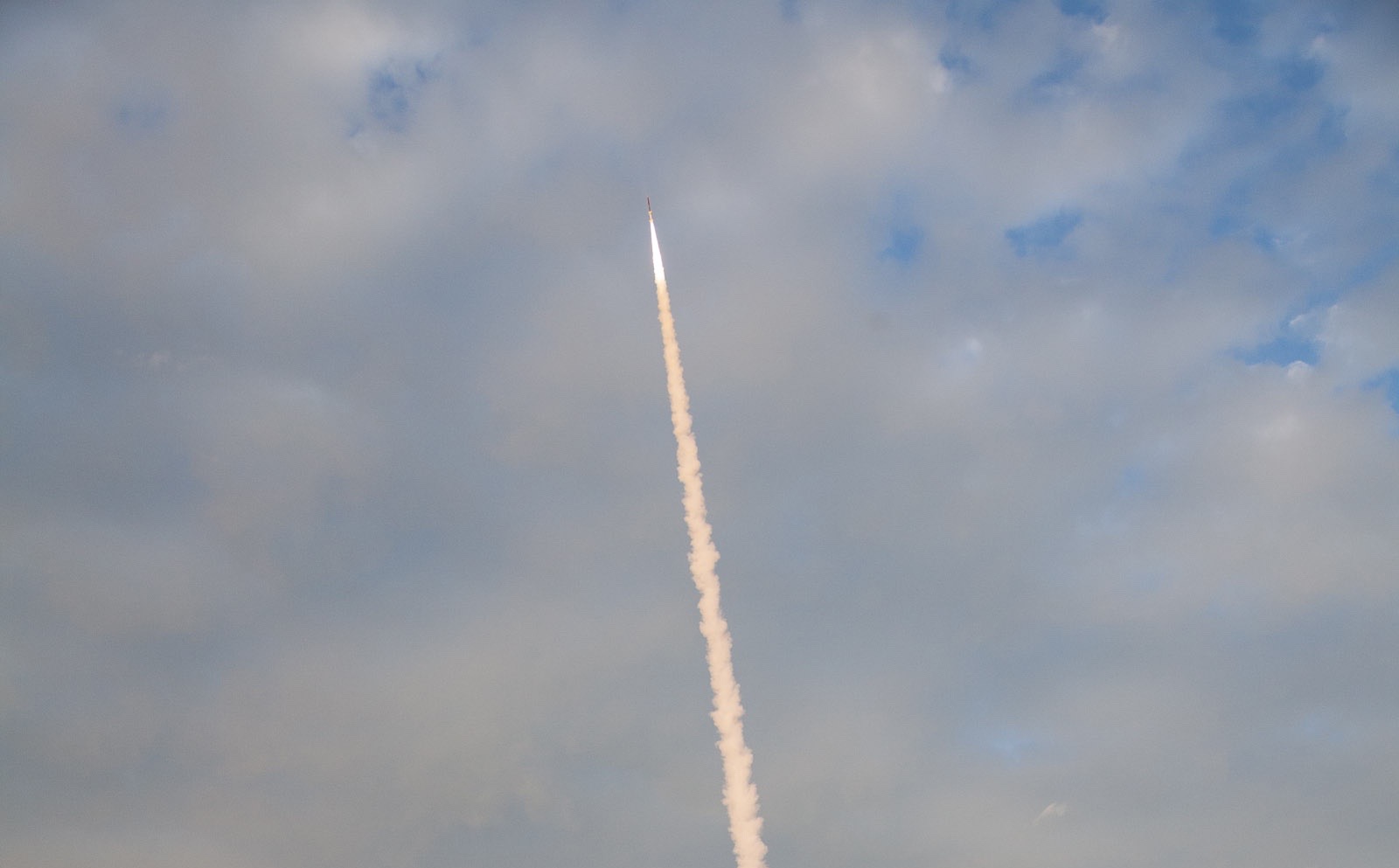Student Experiments Fly High on NASA Suborbital Rocket

A NASA suborbital sounding rocket filled with student experiments flew more than 71 miles (114 kilometers) high yesterday (June 25).
The NASA Terrier Improved Orion rocket launched from the space agency's Wallops Flight Facility in Virginia, carrying payloads built and designed by students participating in two national student rocketry programs, RockOn and RockSat-C. More than 200 middle school and university students came out to watch the launch.
"Through RockOn and RockSat-C, students are learning and applying skills required to develop experiments for suborbital rocket flight," NASA officials wrote in a statement about the flight. "In addition, middle school educators through the Wallops Rocket Academy for Teachers (WRATS) are learning about applying rocketry basics in their curriculum."
RockSat-C and RockOn are both programs of the Colorado Space Grant Consortium, which aims to make space accessible to students. RockSat-C features a competition for to get payloads aboard rockets, similar to what students would face as scientists in the field.
"The RockSat-C program actively engages the students through full design-process mentoring, assisting them through the design phase in the fall semester … and leading the teams through testing and integration reviews and Launch Readiness Review in the spring," the consortium wrote on its website.
The payload aboard the Orion rocket descended by parachute into the Atlantic Ocean off the coast of Wallops, and recovery was in progress when NASA released its statement yesterday (June 25).
Suborbital rockets are often used to provide cheap access to space for experiments. They usually provide a few minutes of weightlessness at the peak of the flight, allowing for brief experiments in microgravity to go forward.
Get the Space.com Newsletter
Breaking space news, the latest updates on rocket launches, skywatching events and more!
Another option for going high in the atmosphere — although not to space itself — is via high-altitude balloon. Over the past few years, models such as a "Star Wars" X-Wing fighter, a Lego minifigure and the USS Enterprise from "Star Trek" have all ridden balloons to near-space..
NASA's next scheduled flight from Wallops is a Black Brant IX suborbital sounding rocket, which is expected to launch July 7.
Follow Elizabeth Howell @howellspace. Follow us @Spacedotcom, Facebook and Google+. Original article on Space.com.
Join our Space Forums to keep talking space on the latest missions, night sky and more! And if you have a news tip, correction or comment, let us know at: community@space.com.

Elizabeth Howell (she/her), Ph.D., was a staff writer in the spaceflight channel between 2022 and 2024 specializing in Canadian space news. She was contributing writer for Space.com for 10 years from 2012 to 2024. Elizabeth's reporting includes multiple exclusives with the White House, speaking several times with the International Space Station, witnessing five human spaceflight launches on two continents, flying parabolic, working inside a spacesuit, and participating in a simulated Mars mission. Her latest book, "Why Am I Taller?" (ECW Press, 2022) is co-written with astronaut Dave Williams.